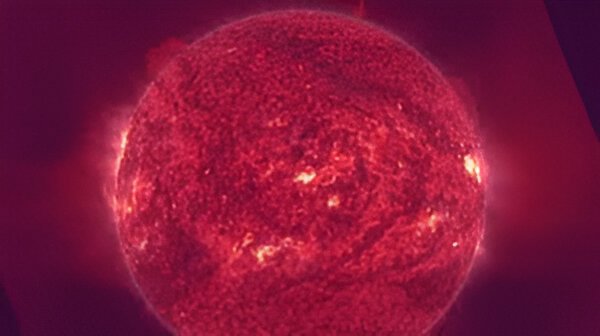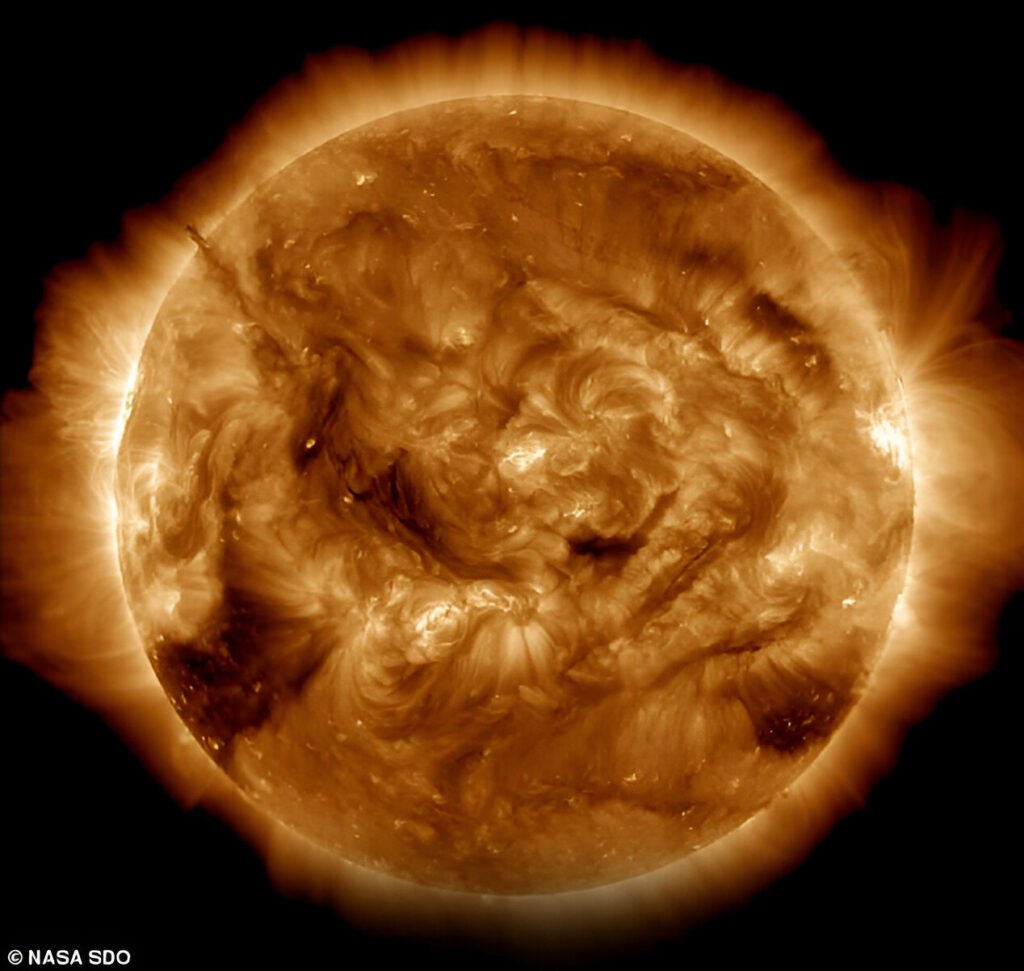
Introduction: A Spectacle from the Sun
Astronomers saw a simply spectacular sight — a colossal, bird wing-shaped solar flare that measured more than 600,000 miles from the Sun’s edge. The “bird wing” eruption, as it came to be known due to its clear arc-like shape, left scientists awestruck not just because of its size but also because of its possible effects. First thought to be a direct impact, triggering extreme geomagnetic storms here on Earth, fresh analysis showed our world only narrowly avoided the solar bullet. What might have been a significant space weather event became a close call, providing a gentle display of celestial fireworks and a graphic reminder of the Sun’s brute force.
What Exactly Happened?
This was not your standard solar flare. Rather, it was a filament eruption, a kind of coronal mass ejection, or CME. Solar flares are brief, brilliant releases of radiation, whereas CMEs are huge clouds of solar particles and magnetic fields launched into space. They occur as magnetic instabilities on the Sun’s surface collapse suddenly, sending huge streams of plasma off into space.
Professor Sean Elvidge, a space environment expert at the University of Birmingham, explains, “These instabilities trigger large-scale expulsions of magnetic field structures and plasma into space,” sometimes traveling at speeds of up to 3000 km per second. That’s nearly 9 times faster than a commercial airliner.
Earth’s Narrow Escape
Initial data had scientists on edge. If this CME had directly struck Earth, we could have faced a strong geomagnetic storm — the kind that disrupts satellites, communication systems, power grids, and navigational instruments. But thanks to the eruption’s trajectory, Earth only received a glancing blow from the tail end of the blast. The European Space Agency’s simulations showed how narrowly we avoided a direct hit — a matter of degrees made the difference between minimal disruption and significant chaos.
While the bulk of the plasma wave swept harmlessly into space, the trailing edge did interact with Earth’s magnetic field. This mild interaction stirred up minor geomagnetic activity, enough to excite the upper atmosphere and potentially light up the skies over the northern UK.

A Northern Lights Surprise for the UK
With the tail of the CME brushing past Earth, skywatchers in parts of Scotland and northern England may be treated to a rare appearance of the Northern Lights on Friday night. The UK’s Met Office forecasts that if the geomagnetic conditions are favorable, the auroras may extend further south than normal.
These auroras occur when charged particles from the sun interact with charged particles in Earth’s atmosphere. The effect? A stunning natural light show, typically in shades of green and purple, glimmering over the night sky. For some people in the UK, it may be an experience of a lifetime.
Please watch our video to find out what would happen if Earth were hit directly.
If the eruption had occurred in a slightly different way, the effects could have been worse. A head-on collision with a CME of this magnitude could have initiated a category G3 or G4 geomagnetic storm, causing disruptions to:
GPS and radio communication networks
Power grids and transformer systems
Satellites in low as well as high orbits
Flight routes of airlines over polar routes
In extreme cases, solar storms have caused nationwide blackouts, such as the infamous 1989 Hydro-Québec outage. Though we’ve since improved our forecasting and preparedness, powerful solar eruptions still pose a significant threat to our tech-dependent world.
The Science Behind Solar Storms
Solar storms often unfold in a series of cascading events:
1. Solar flares are the first sign — explosive releases of energy visible as bright flashes on the Sun.
2. These flares produce X-rays and ultraviolet radiation, which travel to Earth in a mere eight minutes and have the potential to interfere with the ionosphere, disrupting radio signals.

3. High-energy particles, primarily protons, arrive shortly after — typically within several hours. These will damage satellites, astronauts’ health, and aircraft electronics.
4. This is followed by the CME, the sluggish but most effective phase, which may take three days to arrive on Earth. When such clouds of plasma impact, they have the ability to buckle our planet’s magnetic field and produce geomagnetic storms.
Silver Linings in the Storm
While hazardous, solar storms also have some unsuspected advantages. During periods of high solar activity, fewer cosmic rays — particles from outside our solar system — penetrate to Earth. This temporary protection can lower radiation exposure for high-flying aircraft and space missions.
In addition, the heating of the upper atmosphere resulting from solar storms adds drag on space junk, assisting in clearing out part of the detritus surrounding Earth by dragging it down to disintegrate in the atmosphere.
Conclusion: A Celestial Reminder
This week’s “bird wing” solar outburst was a vivid reminder of just how lively — and potentially sinister — our Sun can be. Though we narrowly escaped the worst, the phenomenon inspired scientists and skygazers alike to awe. With aurorae perhaps dancing above the UK, nature has provided not just a near miss but also a moment of magic.
As our dependence on satellite and communication technology increases, tracking solar activity becomes increasingly important. The Sun has spoken — not a roar, but a near miss that might have altered our digital world overnight.









